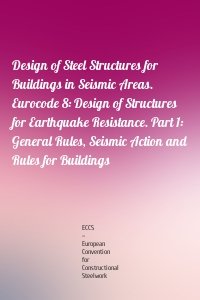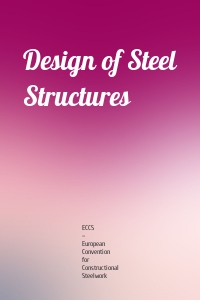ECCS – European Convention for Constructional Steelwork
4 кн.
Design of Steel Structures for Buil...
This volume elucidates the design criteria and principles for steel structures under seismic loads according to Eurocode 8-1. Worked Examples illustrate the application of the design rules. Two case studies serve as best-practice samples.
| Автор | ECCS – European Convention for Constructional Steelwork |
Fatigue Design of Steel and Composi...
This volume addresses the specific subject of fatigue, a subject not familiar to many engineers, but still relevant for proper and good design of numerous steel structures. It explains all issues related to the subject: Basis of fatigue design, reliability and various verification formats, determination of stresses and stress ranges, fatigue strength, application range and limitations. It contains detailed examples of applications of the concepts, computation methods and verifications.
| Автор | ECCS – European Convention for Constructional Steelwork |
Design of Steel Structures
This book introduces the design concept of Eurocode 3 for steel structures in building construction, and their practical application. It especially comments on the regulations of the british National Annexes. Following a discussion of the basis of design, including the limit state approach, the material standards and their use are detailed. The fundamentals of structural analysis and modeling are presented, followed by the design criteria and approaches for various types of structural members....
| Автор | ECCS – European Convention for Constructional Steelwork |
Design of Joints in Steel and Compo...
This book details the basic concepts and the design rules included in Eurocode 3 Design of steel structures: Part 1-8 Design of joints Joints in composite construction are also addressed through references to Eurocode 4 Design of composite steel and concrete structures Part 1-1: General rules and rules for buildings. Attention has to be duly paid to the joints when designing a steel or composite structure, in terms of the global safety of the construction, and also in terms of the overall cost,...
| Автор | ECCS – European Convention for Constructional Steelwork |





